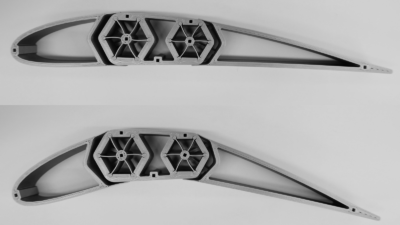Report links astronauts’ increased body temperatures to time in space
By Jonathan G. Metts|December 2018
The Life Sciences and Systems Technical Committee advances technologies required to keep people healthy and safe as they explore space.
Space fever. Widely reported in January, Nature’s Scientific Reports in late 2017 published new research, sponsored by the European Space Agency, that determined spaceflight increases astronauts’ core body temperature by 1 degree Celsius and that the change occurs gradually over 2½ months. The findings were based on direct measurements collected by 11 crew members aboard the International Space Station from 2009 to 2013. They used an adhesive sensor that measures both forehead skin temperature and the local air temperature to improve accuracy without more invasive techniques. The astronauts’ temperatures were higher in space — both during rest and while exercising on the station — and the effect continued for some time after they returned to Earth.
Fruit fly studies continued on the ISS with the April launch of the latest follow-up to 2015 and 2017 flight experiments, a research program led by NASA’s Ames Research Center in California and City College of New York. This latest investigation focuses on the combined effects of spaceflight on innate immunity by studying the host-parasite relationship between fruit flies and Leptopilina wasps. The flies are incubated and housed in vented fly boxes, which provide airflow, visibility and environmental monitoring. Drosophila melanogaster flies are genetically similar to humans, and the research program aims to learn more about the effects of spaceflight on human physiology.
In May, NASA further defined the Lunar Orbital Platform-Gateway program for the agency’s human exploration goals, with plans to launch a power/propulsion module in 2022, then adding habitation capabilities in 2024 to support crewed missions to the lunar orbital station for as long as 60 days. The broad program folds in the Orion spacecraft and the Space Launch System rocket, while also leveraging NASA’s commercial habitat developments through its Next Space Technologies for Exploration Partnerships program and commercial resupply services, as established for the ISS. Initially, crew members would observe the lunar surface and perform telerobotic missions on the surface; a planned airlock upgrade would enable lunar orbital spacewalks.
The ISS’ robotic tools are in the fight against breast cancer on Earth. The Image-Guided Automated Robot — based on Canadian company MacDonald, Dettwiler and Associates’ CanadArm and DEXTRE robotic arms for in-space maintenance — completed Phase II clinical trials in July. It will provide remotely operated, MRI-guided biopsies to screen for breast cancer at local hospitals lacking access to expert radiologists.
Illustration: NASA’s Lunar Orbital Platform-Gateway, in an artist’s rendering. Credit: NASA



































